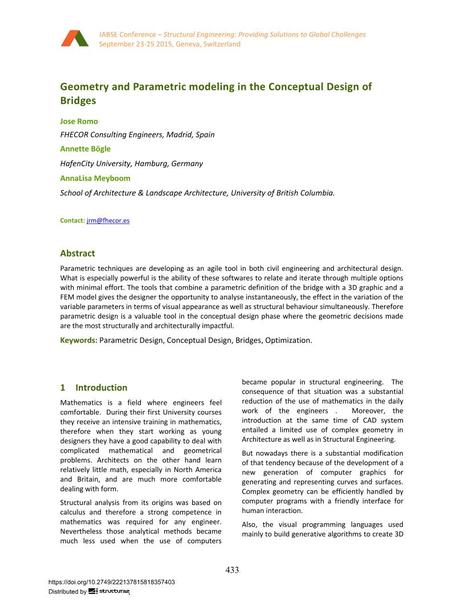Geometry and Parametric modeling in the Conceptual Design of Bridges

|
|
|||||||||||
Détails bibliographiques
| Auteur(s): |
José Romo
(FHECOR Consulting Engineers, Madrid, Spain)
Annette Boegle (HafenCity University, Hamburg, Germany) Annalisa Meyboom (School of Architecture & Landscape Architecture, University of British Columbia.) |
||||
|---|---|---|---|---|---|
| Médium: | papier de conférence | ||||
| Langue(s): | anglais | ||||
| Conférence: | IABSE Conference: Structural Engineering: Providing Solutions to Global Challenges, Geneva, Switzerland, September 2015 | ||||
| Publié dans: | IABSE Conference Geneva 2015 | ||||
|
|||||
| Page(s): | 433-442 | ||||
| Nombre total de pages (du PDF): | 10 | ||||
| Année: | 2015 | ||||
| DOI: | 10.2749/222137815818357403 | ||||
| Abstrait: |
Parametric techniques are developing as an agile tool in both civil engineering and architectural design. What is especially powerful is the ability of these softwares to relate and iterate through multiple options with minimal effort. The tools that combine a parametric definition of the bridge with a 3D graphic and a FEM model gives the designer the opportunity to analyse instantaneously, the effect in the variation of the variable parameters in terms of visual appearance as well as structural behaviour simultaneously. Therefore parametric design is a valuable tool in the conceptual design phase where the geometric decisions made are the most structurally and architecturally impactful. |
||||
| Mots-clé: |
ponts
|
||||
